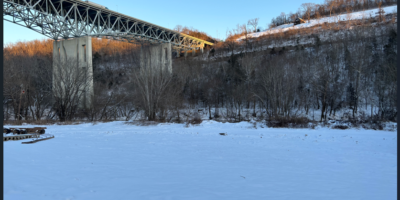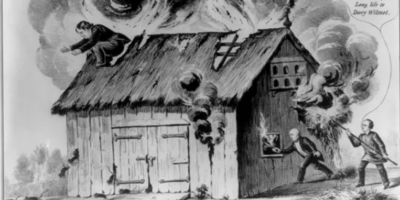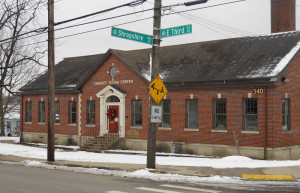Monthly meetings to revisit East End Small Area Plan
By Jessi Fehrenbach
In 2007, the Lexington Fayette Urban County Council hired a group of consultants to create a neighborhood development plan for the city’s East End, a historically black neighborhood located between Elm Tree Lane and Winchester Road, and running from Main Street up to Loudon Ave.
A key component in creating the East End plan involved hearing from residents of the neighborhood itself. There was a block-party-style kick-off rally and a “community visioning workshop” for citizens to voice their concerns, hopes, and dreams for the future of the area. There were update meetings, door-to-door flyers, church and school outreach, news articles.
Two years later in 2009, the Council would adopt what became known as the East End Small Area Plan. The plan, which aims to meet and reflect the needs and concerns of the community residing in the East End, acts as a blueprint for both private and public developments to follow. Though not a legally binding document, it identifies thirteen goals intended to guide the area’s redevelopment:
Goal 1: Recognize, restore, preserve, and conserve the historic, ethnic, and cultural character and resources of the East End.
Goal 2: Create and conserve housing that is affordable, accessible, and attractive to a diverse range of people.
Goal 3: Promote new commercial development to create a mix of uses that respects and enhances the residential neighborhoods of the East End.
Goal 4: Promote opportunities to leverage positive impacts and encourage compatibility from civic investments
Goal 5: Create a neighborhood where daily needs can be met by walking, cycling, or transit.
Goal 6: Enhance and enliven the streetscape with landscaping, art, and signage.
Goal 7: Ensure compatibility and encourage a complimentary relationship between adjacent land uses through strong urban design.
Goal 8: Ensure that safety is a top priority
Goal 9: Protect and enhance personal health and the local environment.
Goal 10: Utilize technology to connect the neighborhood to itself and to the world.
Goal 11: Utilize community organizations to increase social capital in the neighborhood.
Goal 12: Grow a locally based economy that offers opportunities to all residents.
Goal 13: Create a green and environmentally acceptable neighborhood through the recognition of the interdependence of environmental, economic, and social equity concerns.
East End update
The time has come to re-evaluate the progress of the East End Small Area Plan and its thirteen goals. To that end, former District 1 Councilmember Andrea James has organized a series of monthly open meetings designed to re-engage the East End community and address progress and obstacles to the plan’s priorities.
At the January 8 kick-off meeting at the Charles Young Community Center on Third Street, Jim Duncan from the LFUCG Division of Long-Range planning provided an overview on how the East End Small Area Plan fits within Lexington’s overall urban development. Ed Holms, a former president of the William Wells Brown Neighborhood Association, provided a review of the Goals, Objectives, and Actions section of the 2009 plan’s Executive Summary. In addition to these voices, members of the William Wells Brown Neighborhood Association, current District 1 representative Chris Ford, LFUCG Director of Planning Chris King, Lisa Adkins of the Bluegrass Community Foundation and other residents and friends of the East End all expressed their triumphs, concerns, and progress related to the plan. Finally, everyone in attendance was invited to sign up for a task force supporting one of the plan’s thirteen goals.
At the meeting, speakers cited a number of triumphs. These included the completed renovation of both the Lyric Theatre and Charles Young Community Center, the construction of the East End Art-In-Motion bus stop on Third Street and Elm Tree, and a wireless internet initiative that now provides the neighborhood with free wireless. Seedleaf announced plans for three additional community garden plots and an upcoming series of Master Gardener and Master Composter training.
But not all the news was triumphant. The creation of a neighborhood LEED program to facilitate awareness of the neighborhood’s impact on the grid could possibly provide credits for efficient energy use. The city’s Legacy Bike Trail, so-named because it represents a “legacy” gift from the 2010 World Equestrian Games, has yet to be extended to its planned terminus at the East End’s Isaac Memorial Art Garden, itself a WEG project currently behind schedule for completion. Citywide, the Affordable Housing Trust Fund, an initiative that could go a long way in addressing Goal 2, has yet to pass City Council.
Amidst it all, though, the greatest asset supporting the East End Small Area Plan, one cited by many of the speakers, was the passionate community behind it. As a document, the plan continues to be shaped and re-formed by people working together to achieve goals intended to benefit the entire neighborhood.
Get involved! Open community meetings will be held at 6:30 pm on the second Tuesday of each month at the Charles Young Community Center on Third Street. Upcoming Meetings: February 12, March 12, April 9, May 14, June 11.





Leave a Reply